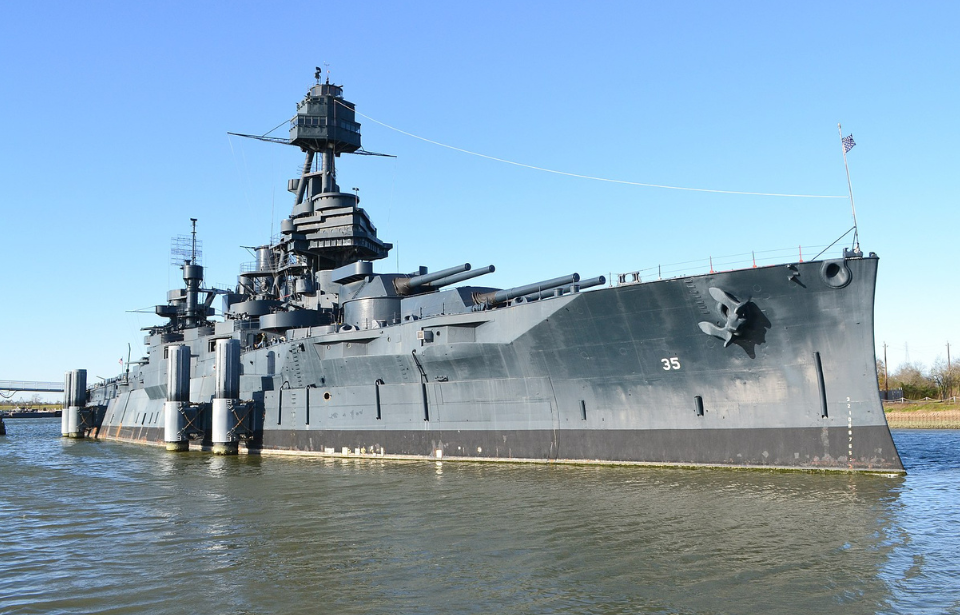Some three years after it was closed to the public, the USS Texas (BB-35) has been transported from its home at the San Jacinto Battleground State Historic Site to the Gulf Copper & Manufacturing Corp shipyard in Galveston. The last remaining dreadnought battleship is set to undergo $35 million repairs to its hull, after which it’ll be brought to a new home.
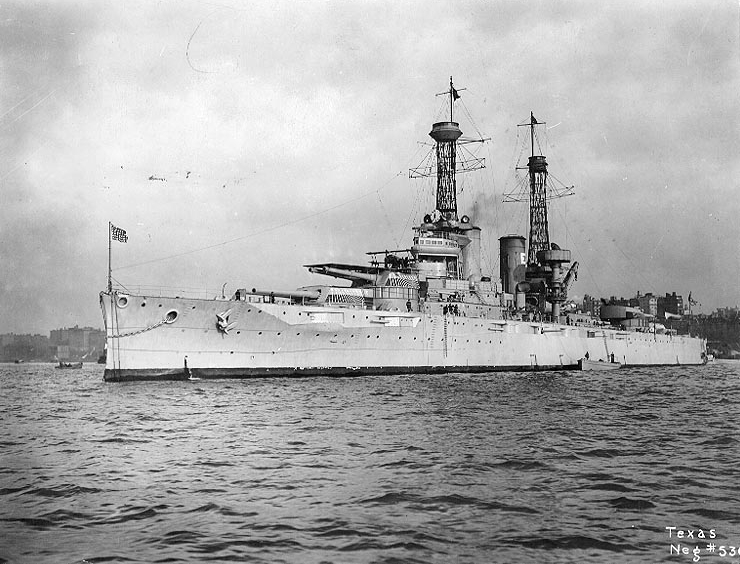
In recent years, Texas has suffered from a leaky, rusty hull that’s forced workers to pump around 2,000 gallons of water from the ship every minute, to keep it from sinking. The damage, which is the result of the hull spending decades below the water, led the Texas state legislature to unanimously approve $35 million in repairs.
The decision was made to tow the 110-year-old battleship from its home at the San Jacinto Battleground State Historic Site, along the Houston Ship Channel to the shipyard in Galveston, where it’ll undergo the necessary repairs. The decision to move it now is “based on the optimal tides and currents at San Jacinto and Galveston to facilitate the safe movement of the ship,” officials with The Battleship Texas Foundation told The Houston Chronicle.
Texas was pulled down the waterway by four tugboats, in a journey that lasted around nine hours. Despite concerns the trip might lead the vessel to sink, she arrived in Galveston without any issues.
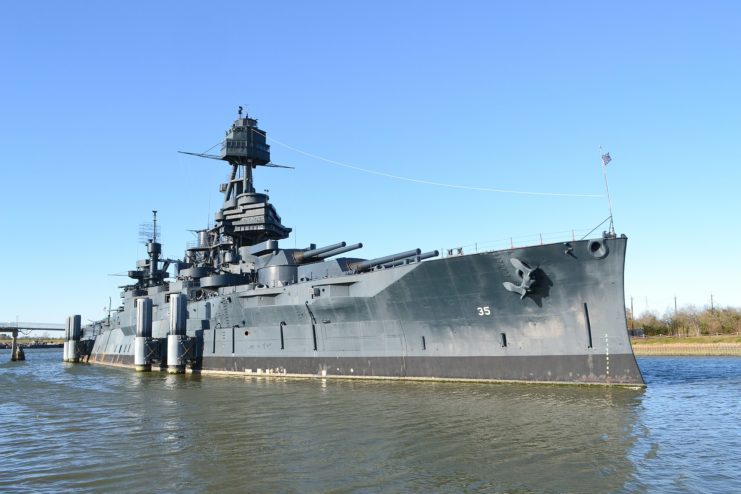
The USS Texas (BB-35) is a former New York-class battleship that’s known for being the last remaining dreadnought from the early 20th century. Operated by the US Navy, she first saw action following the Tampico Incident of April 1914, a confrontation between nine American sailors and approximately 10 infantrymen with the Mexican Federal Army.
Following the incident, US President Woodrow Wilson ordered Rear Adm. Frank F. Fletcher to land a force at Veracruz and seize the customs house there. Texas remained in Mexican waters for approximately two months in support of the onshore American troops.
During the First World War, the battleship conducted training operations off the Virginia Capes and along the coast of New England. During winter fleet tactical and gunnery drills, she was stationed in the West Indies.
When the United States entered the conflict in April 1917, Texas fired the first American shots while aiming at a German U-boat that had surfaced near the merchant vessel SS Magnolia. She eventually joined the Grand Fleet, with whom she conducted convoy missions. The dreadnought also reinforced the British squadron that was on blockade duty in the North Sea.
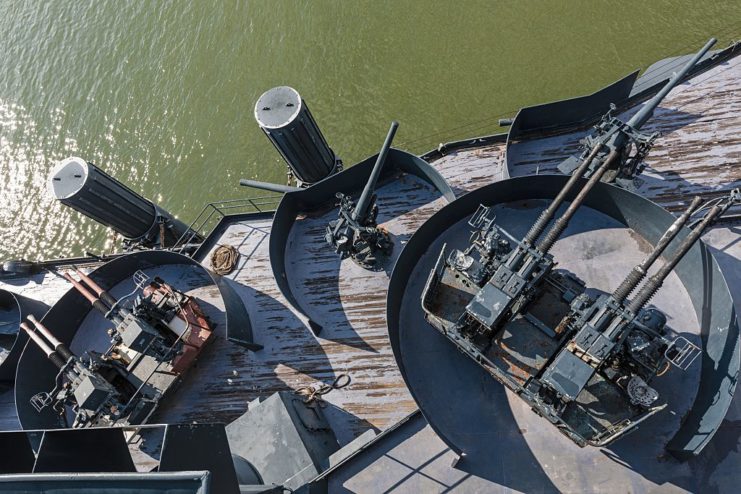
During the interwar period, Texas underwent a major overhaul, which aided in her success during World War II. At the start of the conflict, she operated as part of the Neutrality Patrol, before being stationed at Naval Station Argentia, Newfoundland. She later patrolled the waters near Iceland and conducted a number of convoy-escort missions.
The battleship’s first major combat operation was with Task Group 34.8, the Northern Attack Group for Operation Torch – the Allied invasion of North Africa. She later fired at German-held positions during the D-Day landings in June 1944 and supported Operation Dragoon, the Allied invasion of Provence.
Texas later moved to the Pacific, where she supported the American landings on Iwo Jima and Okinawa, bombarding Japanese positions.
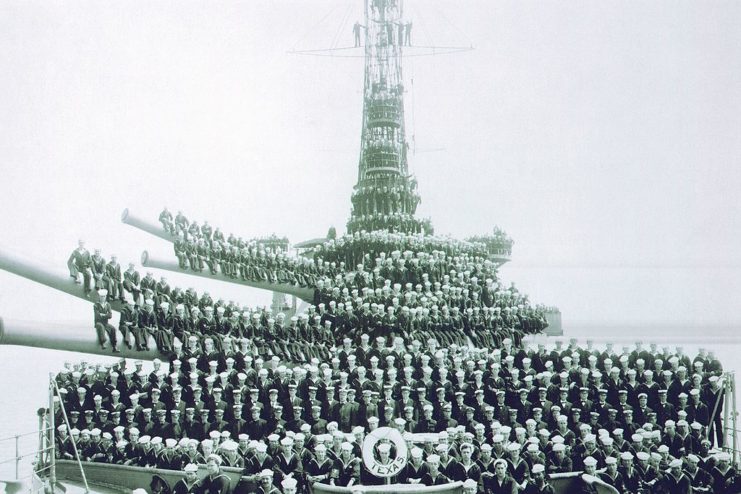
Following her decommissioning in 1948, Texas was stationed at the San Jacinto Battleground Historic Site, known for being the location for the decisive battle of the 1835-36 Texas Revolution. Along with being transformed into a museum ship, she was also used as a set for a handful of films, including Steven McQueen‘s The Sand Pebbles (1966).
The last time Texas underwent repairs was in 1988. Prior to her most recent transfer to Galveston, the Texas Parks & Wildlife Department secured thousands of onboard artifacts and removed a large exhibit.
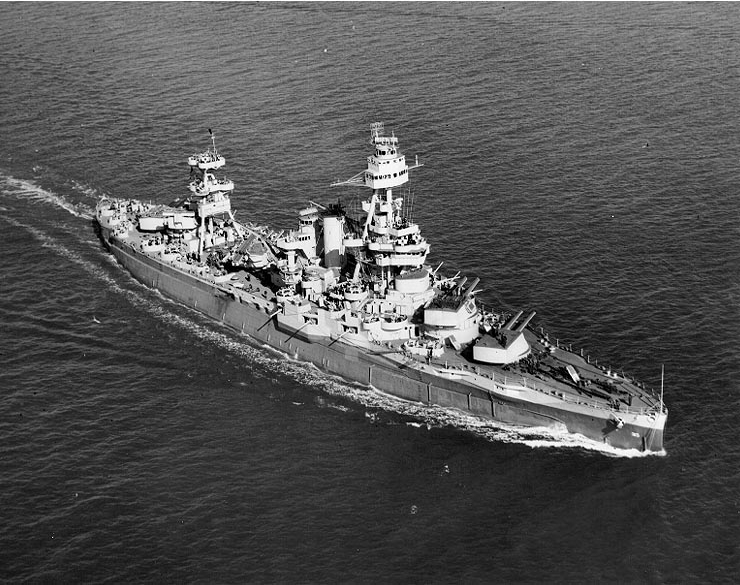
More from us: Scuttled Kriegsmarine Warships Have Risen from the Danube River Amid Severe Drought
Aside from the aforementioned work on the hull, Texas will also undergo other fixes, which The Battleship Texas Foundation will pay for itself. The entire process is expected to take two years, after which the vessel will be moved to a new home within the state, either in Galveston, Beaumont or Baytown.
